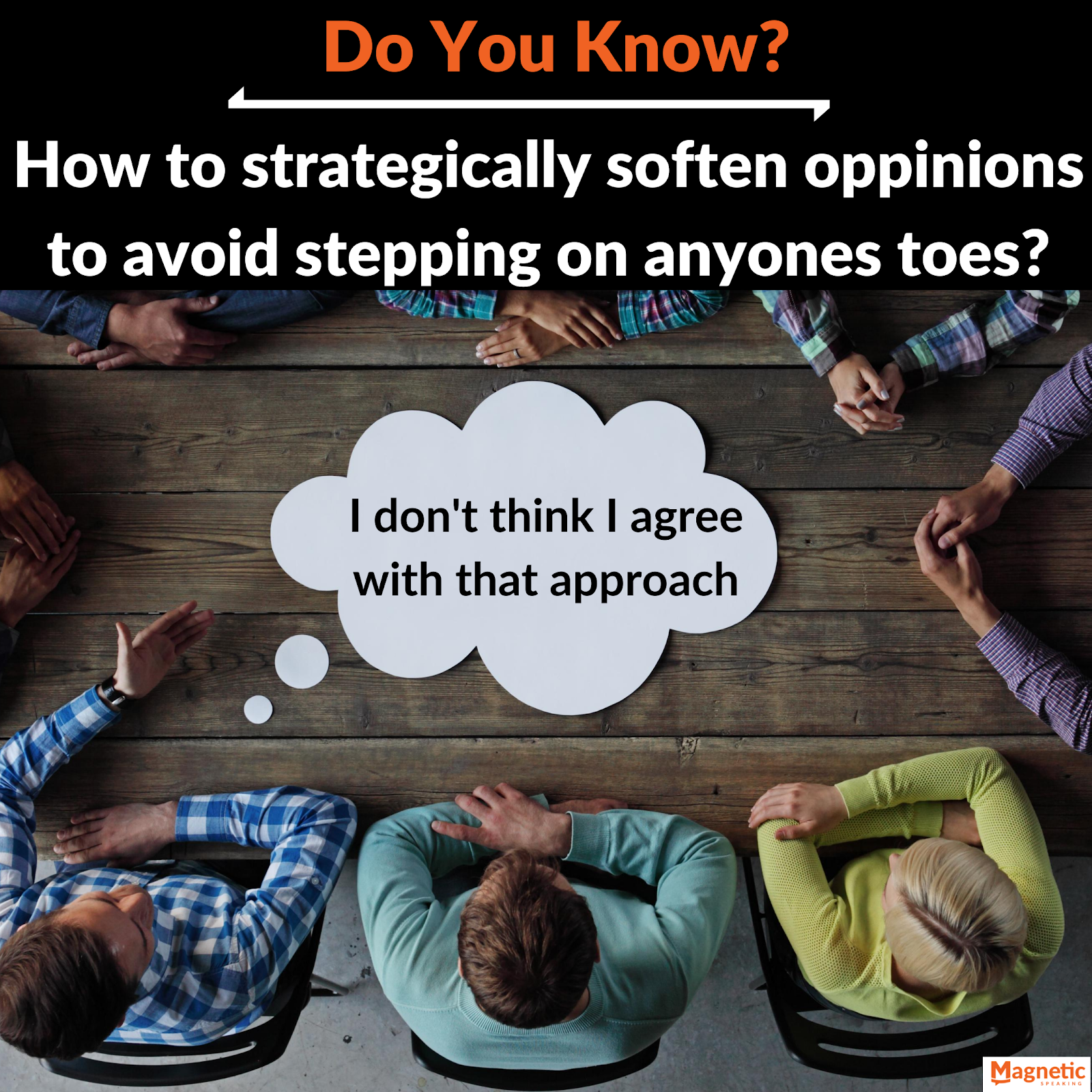If you have to disagree with higher ups, then you have to do it gracefully. Below is a three-part formula to help you navigate the terrain without stepping on landmines.
Mindset – Your opinion matters
Keep in mind that you have something to say, that’s why you’re there. When you have the right mindset going into the conversation then you’ll feel more comfortable sharing what you have to say.
Disagreeing with higher-ups can go poorly as well so don’t completely tear their idea down.
You’re not proving anyone wrong, instead, you’re looking to add onto what they said and gently guide it in a different direction.
In the next sections, you’ll learn how to interrupt gracefully and to strategically soften your opinion.
Interrupt Gracefully
One of the best ways to interrupt a higher up without being insulting is to use a permission-based interrupt. This is a very simple process. All you have to do is add the following phrase in front of your interruption: “Can I interrupt for a second?”
This is meant to be rhetorical and you are not waiting for anyone to give you permission. Once you have their attention you can proceed with what you are about to say.
Strategically Soften Your Opinion

Now that you’ve interrupted gracefully, you want to make sure your opinion is received well so that you have influence. That’s the whole point here. You want your manager or higher-ups to stay open and consider your point of view seriously. If you bruise their ego or make them feel stupid, you lose influence immediately (by the way, this applies to everyone, not just your manager).
Instead, you want you to “soften” your opinion so it lands gently. Here are a few examples:
Unsoftened: That’s a bad idea.
Softened: I don’t think I agree with that approach.
Unsoftened: The team has terrible communication.
Softened: I think the team needs to prioritize better communication skills.
Unsoftened: That’s wrong.
Softened: I’m not sure if that’s totally accurate.
In all of these situations, you’re softening by adding phrases like “I’m not sure…” or “I think…” or “I don’t agree.” You can also be more specific (i.e. prioritize better communication skills) and frame it as a positive thing the team needs to do. Others you can use:
- “I’m concerned/worried that…”
- “I don’t 100% agree…”
- “I don’t think […] is true…”
These phrases make conflict less direct and in-their-face. You’re saying it in a way that doesn’t label them wrong and leaves room for their ideas as well.
But be strategic with these phrases. I don’t recommend softening all the time (most of the time you shouldn’t if you’re working on being more assertive), but in this particular situation, it’s crucial. By softening at the right moment, you’re increasing the likelihood that your manager or higher-ups will be open to your ideas and feedback.
To disagree with higher-ups gracefully you need to have the right mindset, interrupt gracefully using the permission-based interrupt, and finally soften your opinion as you share it. If you do that then the higher-ups will get to hear your ideas and realize the value you bring to the team.




